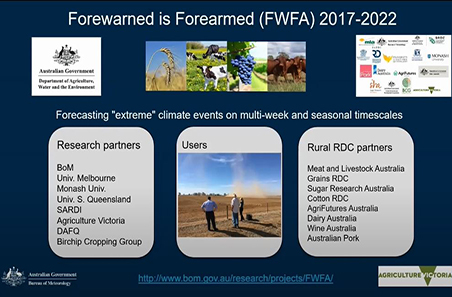Responding to weather and climate variability
Weather and climate variability has major implications for Australian red meat and livestock production. This page outlines how MLA is responding to this variability and includes valuable resources to help producers adapt to Australia’s increasingly variable climate.
Access MLA’s recently collated tools and resources for building business resilience during dry times.
Weather is a specific event — like a rainstorm or hot day — that happens over a few hours, days or weeks.
Source: NASA, 2020
Climate is the average weather conditions in a place over 30 years or more.
Source: NASA, 2020
Global climate change refers to the average long-term changes over the entire Earth. These include changes in rainfall and temperature, as well as the effects of Earth’s warming, such as:
- rising sea levels
- shrinking mountain glaciers
- ice melting at a faster rate than usual in Greenland, Antarctica and the Arctic
- changes in flower and plant blooming times.
Earth’s climate has constantly been changing — even long before humans came into the picture. However, scientists have observed unusual changes recently. For example, Earth’s average temperature has been increasing much more quickly than they would expect over the past 150 years.
Source: NASA, 2020
There are lots of factors that contribute to Earth’s climate. However, the vast majority of scientists agree that Earth has been warming over the past 50 to 100 years due to human activities.
Certain gases in Earth’s atmosphere block heat from escaping. This is called the greenhouse effect. These gases keep Earth warm like the glass in a greenhouse keeps plants warm.
Human activities — such as burning fuels to power factories, cars, planes and buses — are changing the natural greenhouse. These changes cause the atmosphere to trap more heat than it used to, leading to a warmer Earth.
Source: NASA, 2020
Greenhouse gas emissions from the Australian red meat industry include carbon dioxide (CO2), methane (CH4) and nitrous oxide (N2O) emissions from grazing, feedlots and processing operations.
Most of these emissions are in the form of enteric methane, which is gas belched out by ruminants as a natural part of the digestion process as the ruminant convert plant matter, most of which is not available for human consumption, into useful food and fibre. Enteric methane emissions also represent a loss of energy from the ruminant, which can be diverted into productivity pathways, such as increasing live weight gain, using innovative technologies.
How MLA is responding to weather and climate variability
Keeping an eye on the changing weather and climate is a critical part of successful business planning and decision making.
MLA is investing in several research and development (R&D) initiatives to provide better weather and climate information to the Australian red meat industry:
MLA is an investment partner in the Managing Climate Variability (MCV) Program, the lead R&D program in Australia for providing practical weather and climate information and tools to help producers manage the risks and exploit opportunities resulting from changes in weather and climate.
MCV specifically focuses on:
- improving the accuracy of weather and climate forecasting on timeframes of value for primary production
- providing climate information products, services and tools for managing climate risk
- increasing knowledge and confidence to adopt climate risk management initiatives.
To find out more about MCV’s key priorities and current projects, visit the Climate Kelpie website.
Forewarned is Forearmed project
Today, considerable use is made of weather forecasts (days 1–7) for extreme events. However, there is no information available to Australian producers on the odds of extreme events in the weeks or seasons ahead, despite extreme events and climate variability being the key drivers of fluctuations in annual agricultural production and income.
The ‘Forewarned is Forearmed’ project, supported by the Australian Government’s Rural Research and Development for Profit program, will provide five new forecast products for extreme events in the weeks to months ahead, among other outputs. These forecasts will provide advanced warning of extreme weather events such as heatwaves, cold snaps, dry periods and heavy rainfall. Forecasts of extreme events will allow farmers to make proactive management decisions on-farm to minimise the effects of these events on production, such as:
- moving livestock to higher or sheltered paddocks ahead of unseasonal cold or wet conditions
- buying and selling livestock or fodder in line with longer term seasonal forecasts
- mustering and conducting animal husbandry practices when weather conditions are suitable
- timing and rates of application for fertiliser for crops.
The project also seeks to develop risk management packages for extreme events for Australian agricultural sectors. The main agricultural sectors of focus for the project are red meat, grains, dairy, sugar and wine grapes, with support also provided for the cotton, pork and rice industries.
Two of the five cutting-edge forecast products have already been released on the Bureau of Meteorology (BOM) website, including:
- Forecast maps showing the chance of extreme rainfall, extended dry periods, maximum or minimum temperatures for the weeks, months and seasons ahead
- ‘Decile bars’ – location-specific bars that indicate the shift in the probabilities for rainfall, maximum and minimum temperatures compared to usual across the deciles, for the weeks, months and seasons ahead.
The next three forecast products will be released on the BOM website by the middle of 2022, including:
- The ‘climagram’ – location-specific timeseries graphs showing the forecast rainfall totals, as well as maximum and minimum temperatures respectively, for the coming weeks and months
- Probability of exceedance (POE) graphs for rainfall, which indicate how forecast rainfall differs from usual conditions, and how likely it is that different thresholds of rainfall could be exceeded at the location in question.
- A three-day rainfall accumulation (burst) forecast map, which shows the probability of receiving an intense ‘burst’ of rainfall over three consecutive days in the upcoming weeks or fortnights.
More information on the project can be accessed on BOM’s Forewarned is Forearmed project page or read the latest media release about the project here.
Funding partners include the Australian Government Department of Agriculture, Water and the Environment as part of its Rural Research and Development for Profit Program, with further cash and in-kind contributions from 14 project partners. The project lead is MLA.
DOWNLOAD THE FOREWARNED IS FOREARMED WORKBOOK
Contact details:
- If you would like to join the FWFA Community of Practice and be copied in on monthly webinars contact Kate Finger at BCG (E: kate.finger@bcg.org.au)
- If you would like to learn more about FWFA, please contact the National Coordinator Russell Pattinson (E: miracledog@bigpond.com)
The Northern Australia Climate Program (NACP) is a partnership between the Queensland Government, MLA Donor Company and University of Southern Queensland, targeted at helping the grazing industry better manage drought and climate risks through a range of research, development and extension activities.
NACP is divided into three projects:
- improving the underlying science and operational skill of seasonal, sub-seasonal (multi-week) and multi-year climate forecasting systems of direct relevance to the northern Australia red meat industry
- developing innovative and targeted products for use in drought monitoring, planning and prediction for producers and policy makers. Development projects underway focus on producing a customised break of season index tailored for northern Australia to improve the capacity of station managers in grazing lands to proactively manage activities at the dry/wet season interface to reduce land degradation and boost productivity
- integrating and embedding climate forecast information into northern Australia grazing industry networks to improve producer resilience to drought or drier than normal wet seasons, and maximises opportunities presented in above average seasons.
The Australian red meat and livestock industry prides itself as being among the world's best in sustainability of our environment, our livestock, our people and businesses and our climate.
Sustainability goes hand in hand with productivity, profitability and industry longevity. It sits squarely with our Red Meat 2030 strategy to be the leading and most-trusted source of red meat and livestock to the world and our industry's priority to contribute to Australia's net zero ambition.
Find out more information on environmental sustainability and achievements to date.
From 2012–2015, MLA coordinated a national collaborative research program to develop practical options to reduce greenhouse gas emissions from livestock production – the National Livestock Methane Program (NLMP).
The NLMP had three main objectives:
- Develop practical on-farm options to achieve a significant reduction in methane emissions from livestock
- Quantify the level of abatement achievable while at the same time increasing productivity
- Provide the science to underpin methodologies to enable livestock producers to producer carbon credits alongside red meat.
Findings from the NLMP are published in More meat, milk and wool.
Producer case studies
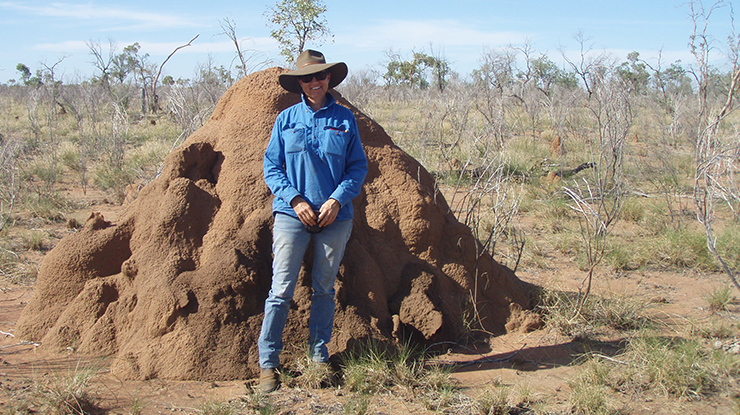
Meeting climate extremes head-on
Nina House, who runs a breeding enterprise in Queensland’s Desert Uplands bioregion, knows that building a business able to withstand climate extremes is critical for success.
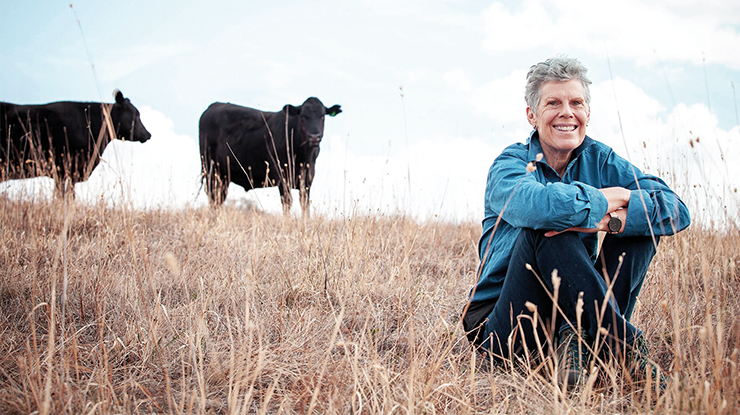
Building resilience from the ground up
If NSW beef producer Gillian Sanbrook had to distil her grazing business into one concept, it would be ‘ground cover, ground cover, ground cover.’
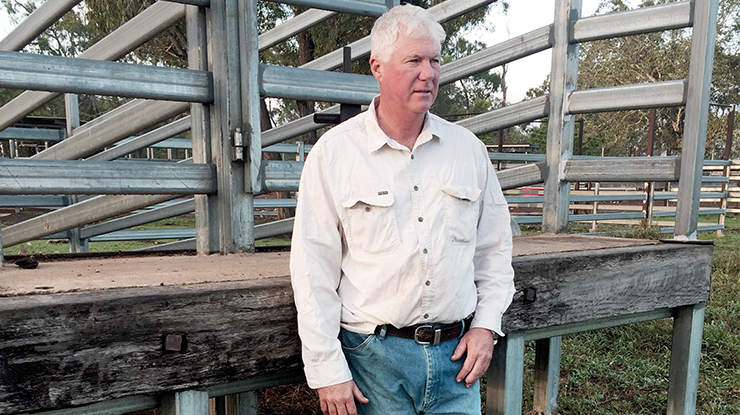
Managing costs in an uncertain climate
North Queensland beef producer Ian MacGibbon uses seasonal forecasts to manage climate variability risks.
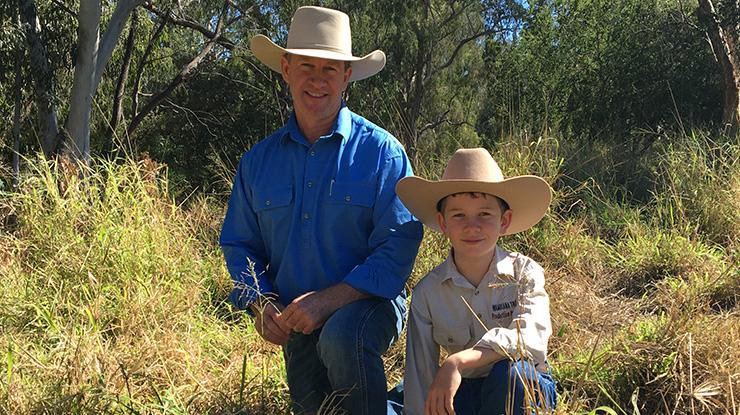
Spelling for success
Michael and Michelle Lyons have turned their first‑hand experience of a long‑term grazing trial on their family’s Charters Towers station into an opportunity to improve pasture management in a highly variable climate.

